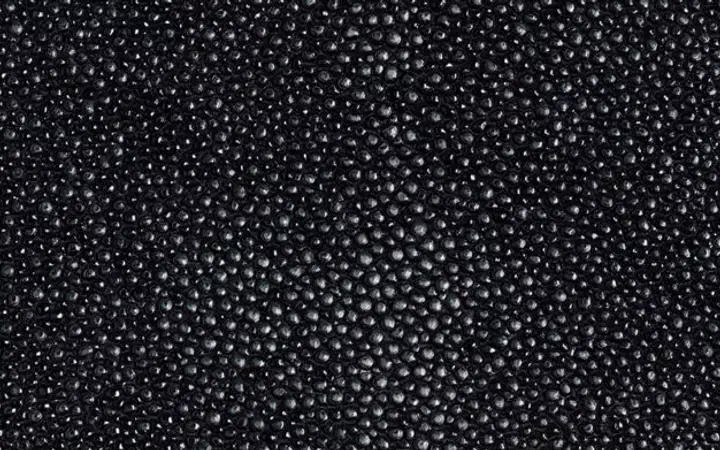Biomimicry – inventions inspired by nature
Tom Baker

Many inventions take inspiration from the natural world — one of the most famous examples being the ‘cat’s eyes’ seen on our motorways. Such ‘biomimetic’ technologies recreate the technical effects of biological phenomena. With modern techniques like additive manufacture (3D printing) now readily available to manufacturers, the biomimetic possibilities are seemingly endless. Here, our materials science expert Tom Baker explores some of the best inventions inspired by nature.
Shark skin swimsuits
Drag is a well-known factor that limits the speed of swimmers. Speedo found inspiration in nature to address this issue, employing biomimicry to develop the LZR Racer shark skin-inspired swimsuit. The LZR Racer suit has structures resembling scales on its surface, mimicking those that sharks possess on their skin. These reduce friction between the suit and the water, thereby improving speed.
These swimsuits were so successful that they sadly became banned from the Olympics. For a time, they were sported by most Olympians, including Michael Phelps as he won a record eight golds at the 2008 Beijing Games.
Sharklet Technologies is another company to have realised the scope of application for a material inspired by shark’s skin. It noticed that the shape and pattern of a shark’s ‘scales’ resist fouling by organisms such as algae and barnacles, and that a surface comprised of millions of microscopic features arranged in a distinct diamond pattern could inhibit bacterial growth from attaching, colonising and forming biofilms. Its products are now used across many industries, including construction, hospitality and transportation, and protected through multiple patent applications.
Stomata sportswear
Many designers have tried to produce waterproof but breathable clothing, with varying degrees of success. One solution was found by inventor Nigel Middleton, who found inspiration for a breathable fabric in stomata — the tiny pores or openings in plant tissue that allow for gas exchange.
UK patent GB2242860B presents just one example of Middleton’s inventions relating to this biomimetic technology. His patent claims a sheet of almost impermeable material with perforations through the thickness. These have a wide region and a narrow region — the wide region defining an internal chamber to the first side of the sheet and the narrow region being sufficiently closed to the opposing side to allow air to accumulate in the chamber under increased pressure, prior to passing out the other side of the sheet, while also preventing the ingress of water.
The cross-section of a fabric below illustrates how this clever technology can be implemented, with the arrows indicating the release of air through the narrow perforation regions:
Biodegradable plastic
Researchers at Harvard have taken inspiration from a material found in the walls of fungi, mollusc shells and the exoskeleton of insects called chitosan to create plastic products that can readily degrade. Chitosan is an abundant natural polymer and is a common by-product of seafood factories. Being natural it has the highly desirable property of being biodegradable.
There have been many attempts to utilise chitosan as a substitute for current synthetic plastics. However, it has not been possible to reproduce its exceptional natural properties. Difficulties faced have been the understanding of the structure of the material produced by living organisms which incorporate chitosan-associated proteins in a specific structural manner. Harvard have developed a composite laminate material of chitosan and silk fibroin that better mimics the naturally occurring material, thereby exhibiting the associated beneficial properties. It can therefore be used to manufacture objects that would be made of conventional plastics having the benefit of being able to rapidly degrade to produce a nitrogen rich fertilizer. It can also be used in medical applications, for example implantable foams, films and scaffolds for surgical closures.
Summary
All inventors are inspired by something, and the natural world is an especially fruitful source of ideas. However, there is more going on here than simply copying mother nature. Biomimicry requires the inventor to identify naturally occurring features and understand how these features may be adopted and applied to solve problems faced by humans. Often, this is only the start of the journey and significant research is required to successfully recreate these features.
Taking inspiration from nature does not diminish the inventive process, and it is often possible to patent the newly discovered application of naturally occurring features. For example, identifying the gas transfer properties of a plant stomata and adapting this naturally occurring phenomenon to achieve a breathable fabric isn’t an obvious jump, as evidenced by the number of patents that have been obtained for this technology.
Often, the challenge faced by inventors attempting biomimicry is recreating the incredibly complex structures found in nature. Recent developments in material technology, such as additive manufacture, should made this task more achievable. As a result, we are likely to see many more game changing products inspired by the natural world.
If you are developing technology using biomimicry, and want to know more about the patentability of your technology, then do not hesitate to contact us.






